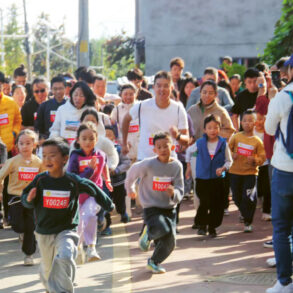Plant observation and its healing effect on the human-social.
In July 2024, a seminar week on Goetheanistic plant observation took place in the Karawanken mountains in Slovenia. People from various anthroposophical fields took part: biologists, pharmacists, doctors, homeopaths, alternative medicine practitioners, and people who were simply interested. The week was organized by Vesna Forštnerič Lesjak (co-leader of the Natural Science Section at the Goetheanum, pharmacist, and Goetheanist) and Jan Albert Rispens (biologist and Goetheanist). As a non-professional participant, I experienced that my abilities were enhanced by this methodology, and I would like to encourage other colleagues to turn to these exciting processes of observing nature. After all, what could be more objective than a plant?!
What abilities am I referring to here? The plant does not want anything and does not define a purpose for itself—it is, and it grows! To do this, it needs a milieu, a community—an environment. We looked at these outer conditions with a “peripheral view”: the view of the surroundings. What other plants are there? What is the soil like? How is the light and temperature? What gestures are there? These were exciting questions for me, especially when I attempted to translate them into social contexts: the biography of the place or the genius loci and the ego within it! The special thing about the plant world is that it is comprehensible for everyone, and therefore, in a way, it is factual and objective. We were mostly very clear in our descriptions. We held back with assessments and interpretations coming from sympathy and antipathy. At the same time, we immersed ourselves in the diversity that a plant reveals on closer inspection.
The Swing of the Pendulum
We began with a broad, curious gaze—observing with the eyes. Then we took a closer look—grasping with the hands and touching and feeling with the skin. And we liked putting some in our mouths to feel it with our tongues and taste buds. With great attentiveness, we noticed the effect all processes had within us. Then we dug up the plants, first exploring with our eyes what the roots looked like: Where do they go? Is it deep or shallow? Is there a rhizome and where are the roots for the new plants? Everything was purely observational: not evaluative and defining, and always done with a questioning attitude. The further we researched, the more nuanced our knowledge became about the plant—we were researching and speaking from the “you” of the plant, not from ourselves! This is a change from our perspective—here, we have a living seeing, touching, feeling, and thinking!
If we follow Rudolf Steiner’s four-fold approach to the study of the human being, we find that which has become through the living, the soul, and the ego forces, as the culmination of what is created from within. On the other hand, we find formations from the periphery, from the outside: that which has become through the biography of the region, the cycle of the seasons, the rhythm of the plant, and all the local site conditions. This also leads us back to the central ego force. We can imagine it as a pendulum swinging in a horizontal figure eight.
Can this be activated as a movement in human encounters? Can I carefully separate objective perception from my person and my will in the encounters with people, especially in my professional field with people with assistance needs, their parents, and our employees, and then consciously bring them together with my trained abilities? Because a person just wants to be a person!
In discussing the development of remedies, Vesna Forštnerič Lesjak and Jan Albert Rispens told us that the Goetheanistic process, from the observation of nature to plant processing to the use of medicinal plants, involves the three steps of imagination, inspiration, and intuition. With this knowledge, we were able to turn to the primrose family of plants in-depth, day after day—in the study room and in the mountains while hiking—and create two remedies in the improvised laboratory.
Event
The Natural Science Section at the Goetheanum will hold their autumn conference, Evolving Science 2024: Diversity Strengthens Identity, from October 10 to 13, 2024. The social aspects will also play a role here.
More Bellis – Arbeitsgemeinschaft für goetheanistische Pflanzenerkenntnis
Translation Laura Liska
Image During the seminar week in July. Photo: Sonja Zausch









